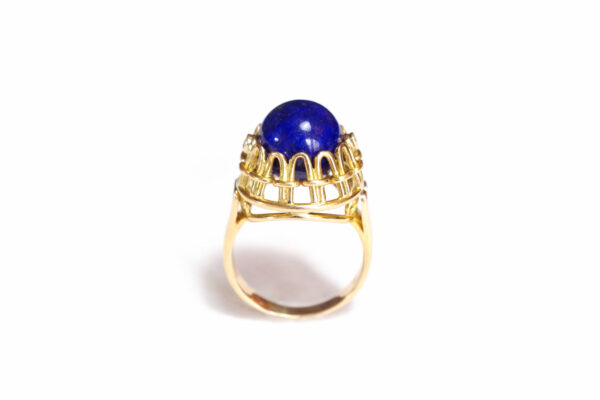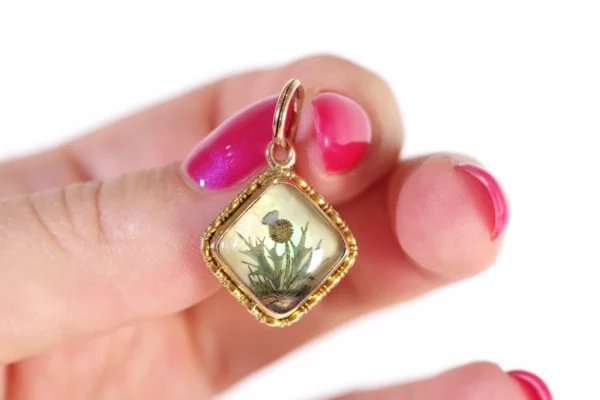Description
Scottish Edwardian thistle pendant in 14k gold. Antique pendant featuring a thistle carved in rock crystal and painted on the inside. The contour of the jewel is decorated with a fine gold frieze. Lucky thistle pendant, circa 1900, probably Scottish.
Austro-Hungarian hallmark for 580 thousandths gold (active between 1866 and 1922).
Dimensions (including setting): 27 x 18 mm
Condition: scratches from use
Weight : 2.76 gr
More info : This work is similar to Essex crystal jewelry. This is a technique developed in England, fashionable between 1860 and 1900, which consists of carving rock crystal from the inside. The subjects depicted are always animals: horse, dog, cat, fish. The name comes from William Essex, an enameller who painted most of these crystals. These pieces are made from a piece of rock crystal, hand-polished to create a domed cabochon with a flat back. A pattern is drawn on the flat face and delicately hand-carved into the crystal, then painted on the reverse by a master craftsman. Painting directly into the carved interior of the dome gives the paintings an incredible trompe-l’oeil effect. Finally, the work was sealed with a support, early examples being covered with gold leaf and later examples with mother-of-pearl and gold.
*The antique gold chain is not sold with the jewel*
See our antique chains










